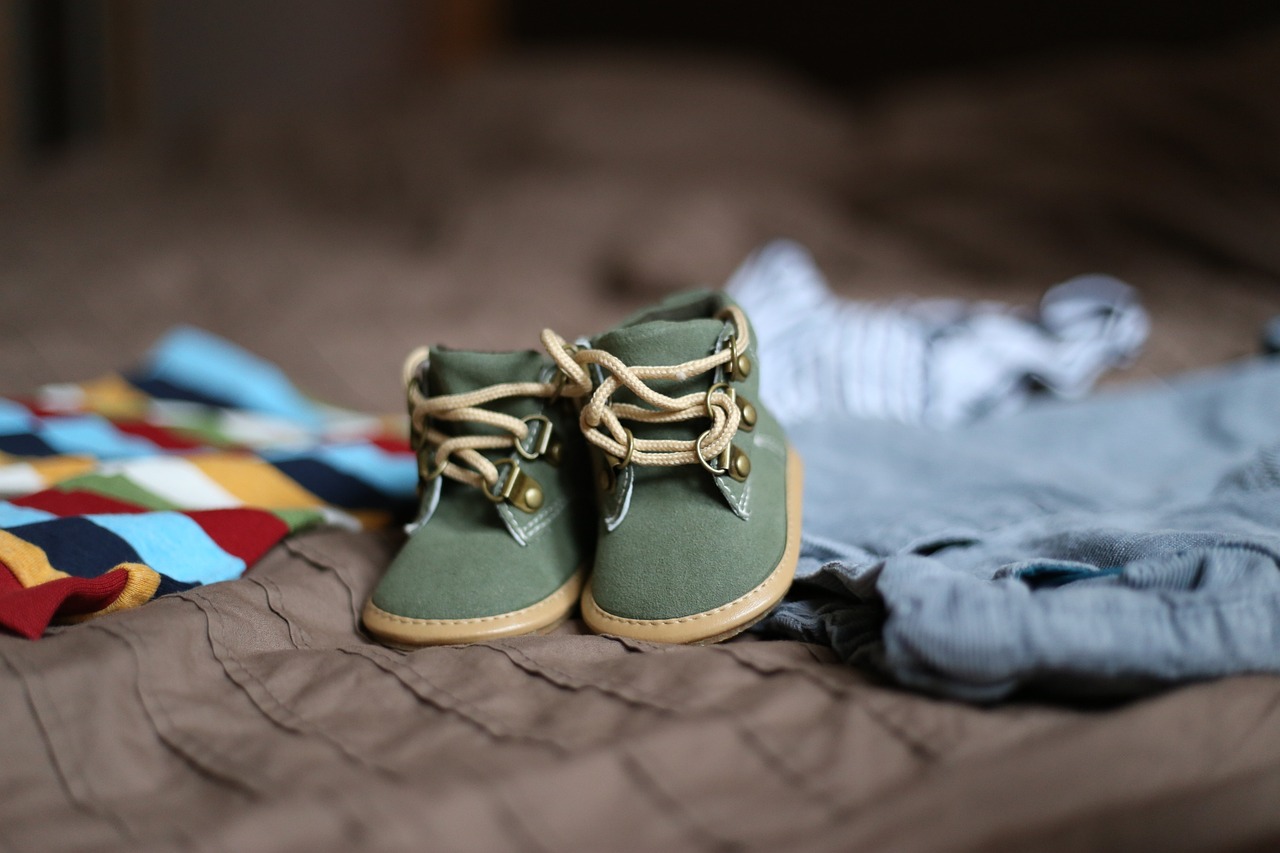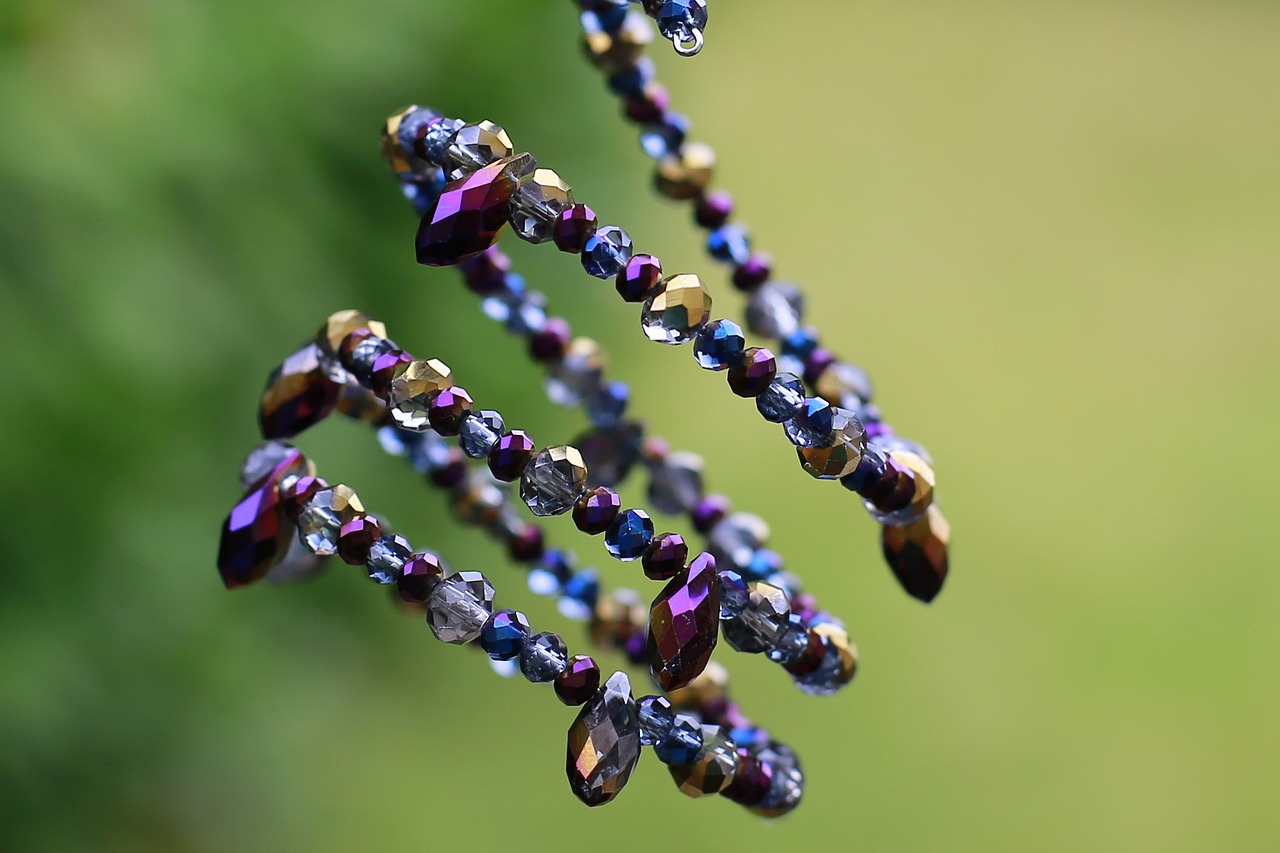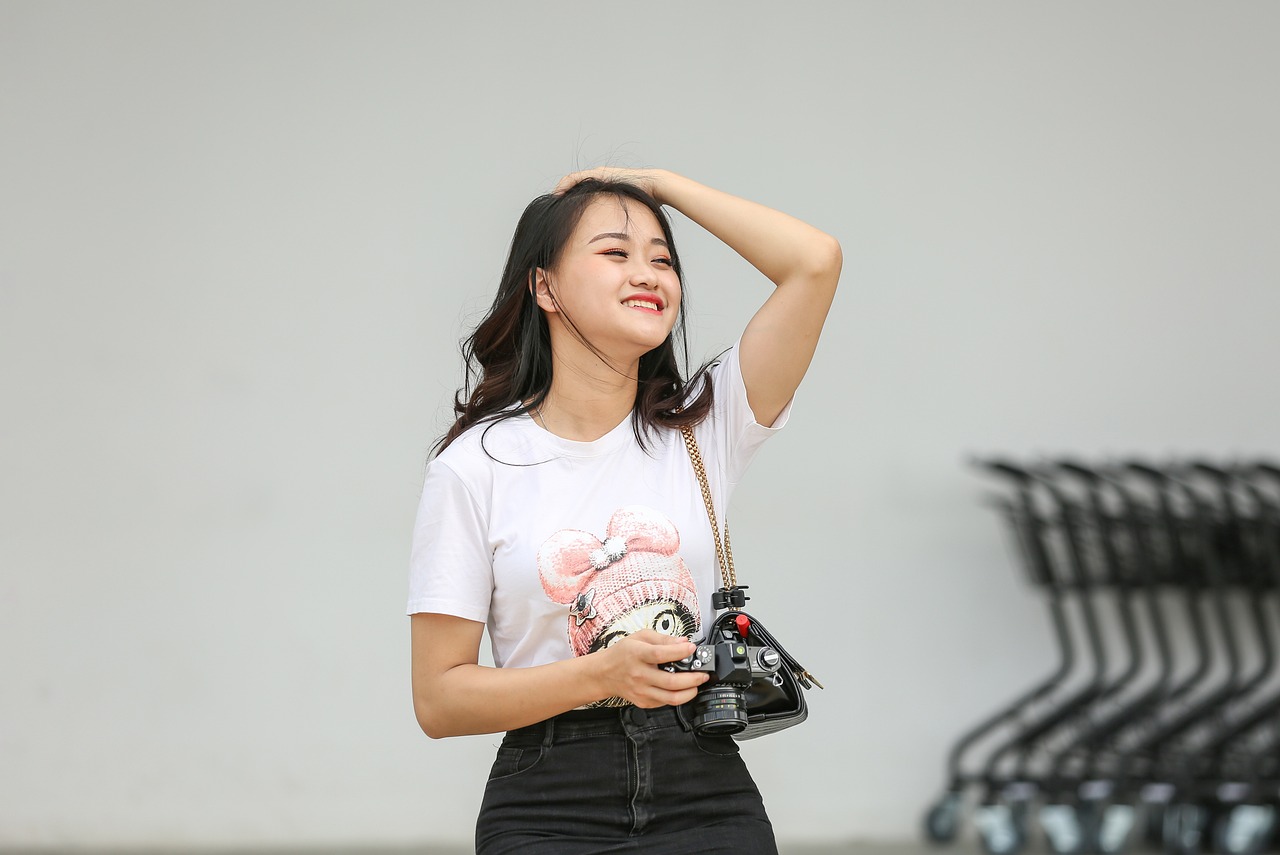How to Support Sustainable Fashion Brands?
In today's world, where environmental concerns and ethical practices are becoming increasingly important, supporting sustainable fashion brands is not just a trend; it’s a necessity. But how can you, as a conscious consumer, make a difference? Well, it starts with understanding the impact of your choices. By opting for brands that prioritize eco-friendly materials and ethical labor practices, you're not just buying clothes; you're investing in a better future for our planet and its inhabitants.
First off, let's talk about the power of your dollar. Every time you make a purchase, you're voting with your wallet. This means that when you choose to buy from sustainable brands, you're sending a message that you care about the environment and the people who make your clothes. It’s like casting a vote for a more ethical and eco-conscious fashion industry. So, next time you're shopping, consider how your choices can contribute to positive change.
Moreover, supporting sustainable fashion brands often means embracing a lifestyle that values quality over quantity. Instead of filling your closet with fast fashion items that wear out quickly and contribute to waste, consider investing in high-quality pieces that will last longer. Think of it as building a wardrobe that tells a story—each item has a history, and each purchase reflects your values. This shift not only reduces waste but also promotes a more mindful approach to fashion.
Another fantastic way to support sustainable fashion is by educating yourself and others around you. Knowledge is power! Understand the principles of sustainability in fashion, the importance of ethical labor practices, and the environmental impact of the clothing industry. Share this knowledge with friends and family. You can even organize workshops or discussions about sustainable fashion in your community. The more people are aware, the greater the collective impact we can have.
Additionally, consider supporting local artisans. When you buy from local creators, you’re not just purchasing a unique piece of clothing; you’re contributing to the local economy and supporting traditional craftsmanship. Local artisans often use sustainable practices and materials, ensuring that their production methods are environmentally friendly. Plus, you get to wear something that’s truly one-of-a-kind!
Lastly, don’t forget to leverage social media. Platforms like Instagram and Pinterest are filled with sustainable fashion influencers and brands that promote eco-friendly practices. By following these accounts and engaging with their content, you can stay updated on sustainable fashion trends and discover new brands that align with your values. Share your favorite finds with your followers to spread the word about sustainable choices.
In conclusion, supporting sustainable fashion brands is about making informed choices that reflect your values. Whether it's through conscious purchasing, educating others, or supporting local artisans, every action counts. Remember, the fashion industry is a powerful force, and by supporting sustainable brands, you're helping to pave the way for a more ethical and eco-friendly future.
1. What is sustainable fashion?
Sustainable fashion refers to clothing that is produced in environmentally friendly ways and ensures ethical labor practices. It focuses on reducing waste, conserving resources, and promoting fair working conditions.
2. How can I identify sustainable fashion brands?
Look for certifications and labels that indicate a brand's commitment to sustainability. Additionally, check for transparency in their supply chains and production processes.
3. Why is it important to support sustainable fashion?
Supporting sustainable fashion helps reduce environmental impact, promotes ethical labor practices, and contributes to a more sustainable economy. Your choices can drive change in the fashion industry.
4. Can I make sustainable choices on a budget?
Absolutely! You can shop second-hand, participate in clothing swaps, or invest in a few high-quality pieces that will last longer. Sustainable fashion doesn’t have to break the bank!

Understanding Sustainable Fashion
Sustainable fashion is more than just a trend; it’s a movement aimed at reshaping the way we think about clothing and its impact on our planet. In a world where the fashion industry is notorious for its environmental footprint, sustainable fashion seeks to create clothing in ways that are both environmentally and socially responsible. This means prioritizing eco-friendly materials, ethical production practices, and a commitment to fair labor rights. Imagine a world where your wardrobe choices not only reflect your personal style but also contribute to a healthier planet and a fairer society. That’s the essence of sustainable fashion.
At its core, sustainable fashion is built on several key principles that guide brands in their operations. These principles include:
- Eco-Friendly Materials: Sustainable brands often use organic, recycled, or biodegradable materials that minimize harm to the environment.
- Ethical Production: This involves ensuring fair wages, safe working conditions, and respect for workers' rights throughout the supply chain.
- Transparency: Brands that practice sustainability are open about their sourcing, manufacturing processes, and the lifecycle of their products.
- Longevity: Sustainable fashion encourages the creation of durable products that stand the test of time, reducing the need for frequent replacements.
The impact of sustainable fashion extends far beyond individual brands; it influences the entire industry and the planet. Traditional fashion practices can lead to significant environmental degradation, including pollution, waste, and resource depletion. Sustainable fashion, on the other hand, aims to mitigate these issues by implementing practices that protect our ecosystems. For instance, by using organic cotton instead of conventional cotton, brands can reduce water consumption and avoid harmful pesticides. This shift not only benefits the environment but also promotes a healthier lifestyle for consumers.
Moreover, sustainable fashion is about creating a circular economy. This concept encourages the recycling and upcycling of materials, allowing products to have multiple lives rather than ending up in landfills. It’s like giving your old clothes a second chance to shine instead of tossing them away. By embracing circularity, sustainable brands help reduce waste and encourage consumers to think critically about their purchasing habits.
In summary, understanding sustainable fashion goes beyond the surface level of trendy eco-friendly labels. It’s about recognizing the interconnectedness of our choices and their broader implications. As consumers, we have the power to support brands that align with our values, promote ethical practices, and contribute to a more sustainable future. By choosing wisely, we can all play a part in this important movement.

Benefits of Supporting Sustainable Brands
In today's fast-paced world, where trends come and go in the blink of an eye, the idea of supporting sustainable fashion brands might seem like a small drop in a vast ocean. However, this choice can create a ripple effect that leads to significant change. When you opt for sustainable brands, you're not just making a fashion statement; you're actively participating in a movement that prioritizes the health of our planet and the well-being of those who inhabit it. So, what are the actual benefits of supporting these brands? Let's dive in!
First and foremost, supporting sustainable brands directly contributes to the environmental health of our planet. The fashion industry is notorious for its heavy pollution and resource depletion. By choosing brands that prioritize eco-friendly practices, you're helping to reduce the carbon footprint associated with clothing production. For instance, many sustainable brands utilize organic materials that require less water and fewer chemicals, which means cleaner waterways and healthier ecosystems. It's like choosing to plant a tree instead of cutting one down—your choices can lead to a greener future.
Moreover, opting for sustainable fashion promotes ethical labor practices. Many mainstream brands often cut corners to maximize profits, resulting in poor working conditions and unfair wages for workers. In contrast, sustainable brands are committed to ensuring that their workers are treated fairly and work in safe environments. By supporting these brands, you're not just buying clothes; you're investing in the dignity and rights of workers globally. It's a way of saying, "I care about the people behind the products I purchase."
An additional benefit is the community impact that comes with supporting local and sustainable brands. Many of these companies are rooted in their communities, employing local artisans and craftsmen. This not only helps preserve traditional skills but also boosts the local economy. When you buy from these brands, you're helping to create jobs and support families in your area. It’s akin to giving a high-five to your local economy—everyone wins!
But wait, there’s more! Supporting sustainable brands can also lead to higher quality products. Fast fashion often sacrifices quality for quantity, resulting in clothes that wear out quickly and end up in landfills. On the other hand, sustainable brands typically focus on creating durable, timeless pieces that stand the test of time. This means that when you invest in quality clothing, you're not just making a purchase; you're making a long-term investment in your wardrobe. Think of it as choosing a classic novel over a flimsy magazine—one will stay with you for years, while the other will be forgotten in a week.
In summary, the benefits of supporting sustainable brands extend far beyond personal style. By making conscious choices, you're contributing to a healthier planet, promoting ethical labor practices, supporting local economies, and investing in quality. It’s a win-win situation that empowers you as a consumer to make a difference. So, the next time you're out shopping, remember that your choices matter. Choose wisely, and let your wardrobe reflect your values!
- What qualifies a brand as sustainable? A sustainable brand typically focuses on environmentally friendly practices, ethical labor conditions, and transparency in its supply chain.
- How can I find sustainable brands? Look for certifications, read reviews, and check the brand's website for information on their practices and values.
- Are sustainable clothes more expensive? While they can be pricier upfront, sustainable clothes often last longer and save you money in the long run.
- Can I support sustainable fashion on a budget? Yes! Thrift shopping and buying second-hand clothes are excellent ways to support sustainability without breaking the bank.

Environmental Impact
The fashion industry, as glamorous as it may seem, is one of the largest polluters on the planet. It's a bit like dressing up a pig; no matter how beautiful the outfit, the underlying issues remain. From excessive water consumption to toxic chemical usage, the environmental toll of conventional fashion is staggering. Sustainable brands, however, are stepping up to the plate, implementing practices that not only reduce their ecological footprint but also promote a healthier planet.
One of the major environmental issues tied to the fashion industry is water pollution. Traditional textile manufacturing processes often involve dyes and chemicals that contaminate local water sources. In contrast, sustainable brands are turning to natural dyes and innovative techniques that minimize water usage and pollution. For instance, some brands use plant-based dyes that not only produce beautiful colors but are also biodegradable, significantly reducing the amount of harmful runoff that enters our waterways.
Another pressing concern is waste generation. The fast fashion model thrives on the idea of constant consumption, leading to mountains of discarded clothing. In fact, it’s estimated that over 92 million tons of textile waste are created each year globally. Sustainable brands tackle this issue head-on by employing recycling and upcycling methods. For example, many brands are now designing clothes that can be easily disassembled for recycling or repurposing, thus contributing to a circular economy where materials are reused rather than discarded.
To put this into perspective, let’s take a look at the comparison between traditional and sustainable practices:
| Aspect | Traditional Fashion | Sustainable Fashion |
|---|---|---|
| Water Usage | High | Low |
| Waste Generation | Massive | Minimized |
| Pollution | Significant | Reduced |
| Materials Used | Synthetic | Natural/Biodegradable |
Moreover, sustainable brands are also adopting eco-friendly materials such as organic cotton, hemp, and Tencel, which require fewer resources to produce and are less harmful to the environment. These materials not only reduce the carbon footprint but also promote biodiversity by encouraging more sustainable agricultural practices.
In conclusion, supporting sustainable fashion brands is not just a trend; it's a necessary shift towards a more responsible and conscious way of consuming. By choosing brands that prioritize environmental impact, consumers can play a pivotal role in transforming the fashion industry into a more sustainable and eco-friendly space. It’s like planting a seed; with time and care, it can grow into something beautiful that benefits everyone.
- What is sustainable fashion? Sustainable fashion refers to clothing that is produced in an environmentally and socially responsible manner, focusing on reducing waste and pollution while promoting ethical labor practices.
- How can I identify sustainable brands? Look for certifications, transparency in supply chains, and brands that prioritize eco-friendly materials and ethical labor practices.
- Why is supporting sustainable fashion important? Supporting sustainable fashion helps reduce environmental impact, promotes ethical labor practices, and encourages a shift away from fast fashion's harmful practices.

Water Conservation
Water conservation is a pressing issue in the fashion industry, and it’s one that sustainable brands are tackling head-on. Did you know that the production of a single cotton t-shirt can consume over 2,700 liters of water? That's enough water for one person to drink for over two and a half years! This staggering fact highlights the need for a shift towards more sustainable practices. Sustainable fashion brands are making strides by implementing innovative techniques that not only reduce water consumption but also promote the overall health of our planet.
One effective approach that many sustainable brands are adopting is the use of water-efficient materials. For example, brands are increasingly turning to organic cotton and hemp, which require significantly less water compared to conventional cotton. Moreover, some companies are utilizing advanced technologies like waterless dyeing processes that minimize the need for water during production. By choosing these methods, brands not only conserve water but also reduce the pollution that often accompanies traditional dyeing processes.
Additionally, sustainable brands often engage in rainwater harvesting and recycling wastewater in their production facilities. This practice not only helps in conserving precious water resources but also ensures that the water used in the manufacturing process is treated and reused, further decreasing the overall environmental impact. For instance, a brand that employs a closed-loop water system can effectively recycle up to 90% of the water used in their production, significantly lowering their ecological footprint.
To put this into perspective, let’s take a look at a comparison of water usage between conventional and sustainable practices:
| Practice | Water Usage (liters) |
|---|---|
| Conventional Cotton Production | 2,700 |
| Organic Cotton Production | 1,500 |
| Waterless Dyeing Technology | 50 |
By supporting brands that prioritize water conservation, consumers can play a crucial role in promoting sustainable practices. It's about making informed choices and understanding that every purchase can have a ripple effect. When you choose to buy from a brand that values water conservation, you’re not just investing in a product; you're contributing to a larger movement that aims to protect our planet's vital resources.
- Why is water conservation important in fashion? Water conservation is vital because the fashion industry is one of the largest consumers of water, leading to environmental degradation and resource depletion.
- How can I identify brands that practice water conservation? Look for certifications, research the brand's sustainability practices, and check for transparency regarding their production processes.
- What are some ways I can reduce my water footprint when shopping? Opt for sustainable brands, buy second-hand clothing, and choose high-quality pieces that last longer.

Waste Reduction
Waste reduction is a cornerstone of sustainable fashion, and it's a topic that deserves our utmost attention. The fashion industry is notorious for generating immense amounts of waste—think about those piles of unsold clothing that end up in landfills, or the discarded fabrics that are thrown away during production. Sustainable brands are stepping up to the plate, employing innovative recycling and upcycling methods to combat this issue. By embracing these practices, they not only minimize waste but also contribute to the creation of a more circular economy.
One of the most effective strategies for waste reduction is upcycling, where brands take old clothing or leftover materials and transform them into new, desirable products. This practice not only diverts waste from landfills but also gives new life to materials that would otherwise be discarded. For instance, some brands create beautiful bags from old jeans or stylish jackets from surplus fabric. It's like giving a second chance to items that have lost their initial purpose, turning waste into something beautiful and functional.
Moreover, sustainable brands often focus on recycling as a means to reduce waste. They implement programs that encourage customers to return their old clothes, which can then be recycled into new fabrics or products. This not only helps to close the loop in the fashion lifecycle but also fosters a sense of responsibility among consumers. When you know your old clothes are being recycled rather than tossed aside, it makes you think twice about your purchases and their impact on the environment.
To illustrate the significant impact of waste reduction practices, consider the following table that highlights the benefits of sustainable waste management in fashion:
| Waste Reduction Strategy | Environmental Benefit | Social Benefit |
|---|---|---|
| Upcycling | Reduces landfill waste and conserves resources | Creates jobs in creative sectors |
| Recycling | Minimizes the need for new raw materials | Encourages community engagement and awareness |
| Zero-Waste Design | Eliminates waste during the production process | Promotes sustainable practices among designers |
It's also important to recognize the role of consumers in this waste reduction journey. When you choose to support brands that prioritize sustainable practices, you're not just making a fashion statement; you're actively participating in a larger movement aimed at reducing waste. Think of it as a ripple effect—your choices can influence others, encouraging them to make more sustainable decisions as well. So, the next time you're shopping, ask yourself: does this brand have a waste reduction strategy? Are they committed to recycling or upcycling? By being an informed consumer, you can help drive the change we desperately need in the fashion industry.
- What is the impact of fast fashion on waste? Fast fashion contributes significantly to waste due to its high production rates and low-quality materials, leading to clothing that is quickly discarded.
- How can I support brands that focus on waste reduction? Look for brands that offer recycling programs, use upcycled materials, and have transparent waste management practices.
- What are some examples of upcycled fashion? Many brands create unique items like bags from old jeans or dresses from surplus fabric, showcasing creativity while reducing waste.

Ethical Labor Practices
When it comes to sustainable fashion, one of the most critical components is ensuring . This means that not only are the materials used in clothing environmentally friendly, but the people who make these clothes are treated with respect and dignity. Imagine a world where every garment you wear is a product of fair wages, safe working conditions, and a commitment to the well-being of workers. Supporting sustainable brands allows you to be a part of this transformative movement.
Many fashion brands today operate in a manner that prioritizes profit over people. This often leads to exploitative labor practices, such as low wages, long hours, and unsafe working environments. However, by choosing to support sustainable fashion brands, you are actively contributing to a system that values human rights and ethical treatment of workers. These brands are committed to ensuring that their workers are paid fairly and work in conditions that are not only safe but also empowering.
So, how can you identify brands that prioritize ethical labor practices? Here are a few key indicators to look for:
- Fair Trade Certifications: Brands that are certified Fair Trade have met rigorous standards for fair wages and ethical working conditions.
- Transparent Supply Chains: Brands that openly share their supply chain details are more likely to be committed to ethical practices.
- Worker Testimonials: Brands that feature stories or testimonials from their workers show a commitment to humanizing the production process.
Moreover, the impact of supporting brands that prioritize ethical labor practices extends beyond just the individual worker. It creates a ripple effect in the community, fostering economic stability and growth. When workers are paid fairly, they can invest in their families, education, and local economies, leading to a healthier society overall. This is not just a feel-good factor; it’s a fundamental shift towards a more equitable world.
In conclusion, supporting sustainable fashion brands that adhere to ethical labor practices is not just a personal choice; it’s a statement about the kind of world we want to live in. By making conscious choices, we can help create a future where fashion is not only beautiful but also just and fair for everyone involved in its creation.
Q: What are ethical labor practices in fashion?
A: Ethical labor practices in fashion refer to fair wages, safe working conditions, and the overall well-being of workers involved in the production of clothing.
Q: How can I find sustainable fashion brands?
A: Look for certifications like Fair Trade, check for transparency in their supply chains, and read reviews or testimonials from workers.
Q: Why should I support sustainable fashion brands?
A: Supporting sustainable fashion brands helps reduce environmental impact, promotes ethical labor practices, and contributes to the well-being of communities.
Q: What is the impact of fast fashion on labor?
A: Fast fashion often leads to exploitative labor practices, including low wages and unsafe working conditions, as brands prioritize profit over people.

How to Identify Sustainable Brands
Identifying truly sustainable brands can feel like searching for a needle in a haystack. With so many companies claiming to be eco-friendly, how do you separate the genuine from the greenwashed? The first step is to look beyond the marketing buzzwords. Many brands will throw around terms like "eco-friendly" or "sustainable" without any real commitment to those ideals. To navigate this maze, you need to be a savvy shopper.
One of the most effective ways to gauge a brand's sustainability is by checking for certifications and labels. These certifications serve as badges of honor, indicating that a brand adheres to specific environmental and social standards. For instance, certifications such as Global Organic Textile Standard (GOTS), Fair Trade, and OEKO-TEX are reliable indicators that a brand is committed to sustainable practices. Here’s a quick overview of some key certifications:
| Certification | Description |
|---|---|
| Global Organic Textile Standard (GOTS) | Ensures organic status of textiles, from harvesting through environmentally and socially responsible manufacturing. |
| Fair Trade | Guarantees fair wages and working conditions for farmers and workers. |
| OEKO-TEX | Tests textiles for harmful substances, ensuring they are safe for human use. |
Another crucial element is transparency in supply chains. Sustainable brands are open about where and how their products are made. They provide insights into their sourcing of materials, labor practices, and environmental impact. If a brand is hesitant to disclose this information, it's a red flag. Look for brands that share stories about their production processes, the artisans involved, and the materials used. This transparency builds trust and allows consumers to make informed choices.
Furthermore, consider the brand's overall mission and values. Does their messaging align with sustainable practices? Are they actively engaging in initiatives that promote environmental conservation or social justice? A brand that is genuinely committed to sustainability will often have a clear mission statement that reflects their values. Engage with their social media platforms or blogs to see if they are discussing their impact or sharing educational content related to sustainability.
Lastly, customer reviews can also provide insight into a brand's sustainability practices. Look for feedback from other consumers regarding the quality and longevity of the products. Brands that prioritize sustainability usually produce items that are made to last, which means fewer purchases over time. If you notice a pattern of customers expressing dissatisfaction with the durability or ethical standards of a brand, it might be time to look elsewhere.
By keeping these factors in mind, you can confidently navigate the world of sustainable fashion and support brands that are genuinely making a difference. Remember, your choices as a consumer can drive change in the industry, and every purchase counts!
- What are some common signs of greenwashing? Look for vague claims, lack of transparency, and brands that don't provide any certifications.
- How can I find local sustainable brands? Research online, check social media platforms, and visit local markets or eco-friendly shops to discover local artisans.
- Are sustainable brands more expensive? While some sustainable brands may have a higher upfront cost, they often provide higher quality and durability, leading to savings in the long run.

Certifications and Labels
When it comes to navigating the complex world of sustainable fashion, serve as vital signposts for consumers. These credentials help us identify brands that are genuinely committed to eco-friendly practices and ethical production. However, with so many different certifications out there, it can be overwhelming to know which ones to trust. That's why understanding what each label signifies is crucial for making informed purchasing decisions.
Many sustainable fashion brands proudly display various certifications on their products. These can range from environmental standards to social responsibility benchmarks. For instance, the Global Organic Textile Standard (GOTS) is a leading textile processing standard for organic fibers, ensuring that the entire supply chain meets stringent environmental and social criteria. Similarly, the Fair Trade Certified label guarantees that the workers involved in production receive fair wages and work in safe conditions.
In addition to these, there are several other noteworthy certifications that consumers should look out for:
- OEKO-TEX® Standard 100: This certification ensures that textiles are free from harmful substances, promoting a healthier environment for both consumers and workers.
- Cradle to Cradle Certified™: This label indicates that a product is designed with a circular economy in mind, focusing on sustainability throughout its lifecycle.
- B Corporation: Brands that achieve B Corp certification meet high standards of social and environmental performance, accountability, and transparency.
While certifications are a great starting point, they are not the only factor to consider. It's essential to look beyond the labels and investigate the brand's overall practices. Transparency is key; brands that are open about their supply chains and production processes are often more trustworthy. For example, a brand that shares information about its sourcing, labor practices, and environmental impact is more likely to be genuinely committed to sustainability than one that keeps such details under wraps.
As you shop for sustainable fashion, remember that these certifications and labels are not just marketing gimmicks. They represent a commitment to making a positive impact on the environment and society. By choosing brands that prioritize these values, you are not only supporting sustainable practices but also contributing to a larger movement towards a more ethical and eco-friendly fashion industry.

Transparency in Supply Chains
In an age where consumers are becoming increasingly aware of the ethical implications of their purchases, has emerged as a crucial factor in the sustainable fashion movement. But what does transparency really mean? It refers to how open and clear a brand is about its production processes, sourcing of materials, and labor practices. When brands share this information, it not only builds trust with consumers but also holds them accountable for their actions. Imagine walking into a store and knowing exactly where your clothes came from, who made them, and under what conditions. Wouldn't that make you feel better about your purchase?
Brands that prioritize transparency often provide detailed information about their supply chains, which can include everything from the origin of the raw materials to the ethical standards upheld in factories. This level of openness allows consumers to make informed decisions and encourages brands to maintain high standards throughout their production processes. For example, a brand might publish a transparency report that outlines their suppliers, labor conditions, and environmental impact. This is a significant step towards fostering a more ethical fashion industry.
However, not all transparency claims are created equal. Some brands may use vague language or provide limited information to create an illusion of transparency without genuinely committing to sustainable practices. To help you navigate this complex landscape, here are a few key aspects to look for when evaluating a brand’s transparency:
- Detailed Supply Chain Information: Look for brands that disclose their suppliers and the locations of their production facilities.
- Ethical Certifications: Check if the brand holds certifications from recognized organizations that verify their sustainable practices.
- Regular Reporting: Brands that publish annual sustainability reports show a commitment to transparency and accountability.
Moreover, the role of technology in enhancing transparency cannot be overlooked. Many brands are now using blockchain technology to provide an unalterable record of their supply chains. This innovation allows consumers to trace the journey of their clothing from raw materials to the final product. It’s like having a digital passport for your clothes—how cool is that?
Ultimately, supporting brands that prioritize transparency not only empowers you as a consumer but also encourages other brands to adopt similar practices. By demanding transparency, we can collectively push the fashion industry towards a more sustainable and ethical future. So the next time you shop, remember to ask questions. Where did this come from? Who made it? Your curiosity can spark significant change!
Q1: Why is transparency important in the fashion industry?
A1: Transparency is crucial as it allows consumers to make informed choices, ensures brands are held accountable for their practices, and fosters trust between consumers and brands.
Q2: How can I find out if a brand is truly transparent?
A2: Look for detailed supply chain information, ethical certifications, and regular sustainability reports. Brands that provide this information are generally more trustworthy.
Q3: What role does technology play in transparency?
A3: Technology, such as blockchain, helps brands provide verifiable information about their supply chains, allowing consumers to trace the origins of their clothing.

Making Sustainable Choices
In a world where fast fashion reigns supreme, making sustainable choices can feel like navigating a maze. However, each small decision we make can significantly impact the environment and society. So, how can we turn the tide? It starts with a simple shift in mindset. Instead of mindlessly shopping for the latest trends, consider the longevity and impact of your purchases. Ask yourself: "Will this piece stand the test of time, both in style and durability?" Investing in quality over quantity not only saves you money in the long run but also reduces the demand for mass-produced clothing that often harms our planet.
Additionally, supporting local artisans is another powerful way to make sustainable choices. When you buy from local creators, you’re not just acquiring unique pieces; you’re also contributing to your community’s economy. Local artisans tend to use more sustainable practices, and their products often have a smaller carbon footprint compared to those shipped from overseas. Think about it: every time you choose to purchase from a local artist, you’re helping to preserve traditional crafts and support ethical labor practices.
Moreover, consider the materials used in the clothing you purchase. Look for brands that prioritize eco-friendly fabrics such as organic cotton, hemp, or recycled materials. These choices not only lessen the environmental impact but also promote healthier farming practices. It’s like choosing to nourish your body with fresh vegetables instead of processed snacks; it’s about making choices that are better for you and the planet.
Another aspect of sustainable choices is being mindful of your clothing care habits. Washing clothes less frequently and opting for cold water can significantly reduce energy consumption. Air drying your garments instead of using a dryer also helps extend their lifespan. These small actions might seem trivial, but they collectively contribute to a more sustainable fashion ecosystem.
To further guide you in your sustainable journey, here’s a quick table summarizing some impactful choices you can make:
| Choice | Impact |
|---|---|
| Invest in Quality | Reduces waste and promotes durability |
| Support Local Artisans | Boosts local economies and reduces carbon footprint |
| Choose Eco-Friendly Fabrics | Minimizes environmental damage and supports sustainable farming |
| Practice Mindful Clothing Care | Extends garment life and reduces energy use |
Ultimately, making sustainable choices is about cultivating a mindset that values the stories behind the clothes we wear. Instead of viewing fashion as disposable, imagine it as a canvas for expression that reflects our values. By embracing sustainable practices, we not only enhance our wardrobes but also contribute to a healthier planet. So, the next time you’re about to make a purchase, pause for a moment. Consider the impact of your choices, and remember that every action counts. Together, we can create a more sustainable future, one outfit at a time!
Q: What are some easy ways to start supporting sustainable fashion?
A: Start by investing in quality pieces, supporting local artisans, and choosing eco-friendly materials. Additionally, practice mindful clothing care to extend the life of your garments.
Q: How can I tell if a brand is truly sustainable?
A: Look for certifications, transparency in supply chains, and brands that openly share their sustainability practices. Authentic brands will often provide details about their materials and labor practices.
Q: Is sustainable fashion more expensive?
A: While some sustainable brands may have higher upfront costs, investing in quality clothing that lasts longer can save you money over time. Plus, you’re supporting ethical labor practices and environmental conservation.

Investing in Quality Over Quantity
When it comes to fashion, the age-old adage "you get what you pay for" rings exceptionally true. In a world dominated by fast fashion, where cheap and trendy items fly off the shelves, may seem counterintuitive. However, this approach not only benefits your wardrobe but also plays a crucial role in promoting sustainable practices in the fashion industry. Imagine walking into your closet and seeing pieces that not only look good but also feel good—clothes that have a story, a purpose, and a commitment to ethical production.
Quality clothing is often crafted with care, using durable materials that stand the test of time. When you choose to buy a well-made garment, you're making a statement about your values. You're saying no to the throwaway culture that has plagued the industry for too long. Think of it as a long-term investment; just like you would invest in a good pair of shoes or a quality kitchen appliance, investing in clothing that lasts pays off in the long run. You’ll find yourself saving money as you won’t need to replace items every few months, and your closet will be filled with timeless pieces rather than fleeting trends.
Moreover, high-quality items often come with a reduced environmental impact. Sustainable brands prioritize eco-friendly materials and ethical production methods, meaning that your purchase supports practices that are kinder to the planet. For instance, brands that focus on craftsmanship often utilize organic fibers, recycled materials, and low-impact dyes, which significantly reduce pollution and waste. This is crucial in an industry notorious for its environmental footprint.
Another aspect to consider is the emotional connection you develop with quality pieces. A beautifully crafted dress or a sturdy jacket can evoke feelings of pride and joy, making you more likely to cherish and care for these items. In contrast, fast fashion often leads to a cycle of disposability, where garments are worn only a few times before being discarded. By investing in quality, you cultivate a more meaningful relationship with your wardrobe, leading to more thoughtful consumption.
To further illustrate the benefits of investing in quality, consider the following table comparing fast fashion and sustainable fashion:
| Aspect | Fast Fashion | Sustainable Fashion |
|---|---|---|
| Material Quality | Low-quality, synthetic materials | High-quality, natural or recycled materials |
| Longevity | Short-lived, often damaged after a few washes | Durable, designed to last for years |
| Environmental Impact | High pollution and waste | Eco-friendly production methods |
| Ethical Production | Often exploitative labor practices | Fair wages and safe working conditions |
In conclusion, investing in quality over quantity is not just a smart choice for your wardrobe; it's a powerful step towards a more sustainable future. By choosing to purchase from brands that prioritize ethical practices and durable materials, you are making a conscious decision to support a fashion industry that values people and the planet. So next time you’re tempted to grab that bargain bin t-shirt, take a moment to think about the impact of your choices. Remember, quality pieces are not just clothes; they are a reflection of your values.
- Why is investing in quality clothing important? Investing in quality clothing reduces waste, supports ethical production, and promotes a more sustainable fashion industry.
- How can I tell if a brand is sustainable? Look for certifications, transparency in their supply chain, and a commitment to ethical labor practices.
- Are sustainable brands more expensive? While the upfront cost may be higher, quality items often last longer, saving you money in the long run.
- What are some examples of sustainable materials? Organic cotton, Tencel, hemp, and recycled polyester are all sustainable materials commonly used in eco-friendly clothing.

Supporting Local Artisans
When you think about sustainable fashion, have you ever considered the incredible impact of supporting local artisans? These talented individuals pour their heart and soul into creating unique pieces that not only reflect their cultural heritage but also embody a commitment to ethical practices. By choosing to buy from local artisans, you’re not just purchasing clothing; you’re investing in a story, a craft, and a community.
Local artisans often use traditional techniques that have been passed down through generations, ensuring that each item is not only beautifully crafted but also rich in history. This is in stark contrast to mass-produced fashion, which often prioritizes speed and profit over quality and sustainability. By supporting local makers, you’re actively participating in the preservation of these age-old practices, helping to keep them alive in a world that increasingly favors automation and conformity.
Furthermore, buying from local artisans has a profound economic impact. When you choose to purchase handmade goods, your money stays within the community, fostering local economies and creating jobs. This is especially important in regions where employment opportunities may be limited. The benefits ripple outwards, as artisans can reinvest in their businesses, hire more local talent, and contribute to the overall vitality of their communities.
Let’s not forget the environmental advantages of supporting local artisans. Many of them prioritize using eco-friendly materials and sustainable practices in their work. Unlike large fashion brands that often rely on cheap, synthetic materials shipped from far-flung corners of the globe, local artisans are more likely to source their materials locally, reducing the carbon footprint associated with transportation. This practice not only helps the environment but also supports local suppliers and farmers.
In addition, purchasing from local artisans allows you to own one-of-a-kind pieces that stand apart from the cookie-cutter items found in mainstream stores. Imagine wearing a dress that you know was hand-stitched by a skilled artisan in your community, or donning a pair of shoes crafted from locally sourced leather. These unique items often come with a personal touch, making them far more special than mass-produced alternatives.
So, how can you start supporting local artisans? Here are a few suggestions:
- Visit local craft fairs and markets where artisans showcase their work.
- Explore online platforms dedicated to handmade goods, such as Etsy or local artisan websites.
- Follow local artisans on social media to stay updated on their latest creations and sales.
- Share their work with your friends and family to help spread the word!
By embracing the philosophy of supporting local artisans, you’re not just making a fashion choice; you’re making a statement about the kind of world you want to live in. You’re saying yes to sustainability, community, and creativity. So the next time you’re on the hunt for something new to wear, consider looking locally. Together, we can foster a fashion industry that values people and the planet.
Q: Why is supporting local artisans important for sustainable fashion?
A: Supporting local artisans helps preserve traditional crafting techniques, boosts local economies, and promotes environmentally friendly practices. It also provides consumers with unique, high-quality items that tell a story.
Q: How can I find local artisans in my area?
A: You can find local artisans by visiting craft fairs, farmers' markets, or specialty shops. Additionally, searching online platforms dedicated to handmade goods or following local artisan groups on social media can help you discover talented creators near you.
Q: Are handmade items more expensive than mass-produced clothing?
A: While handmade items can be more expensive due to the time and craftsmanship involved, they often offer greater durability and uniqueness. Investing in quality pieces can lead to long-term savings and satisfaction.
Frequently Asked Questions
- What is sustainable fashion?
Sustainable fashion refers to clothing that is designed, manufactured, and marketed in ways that are environmentally and socially responsible. It emphasizes eco-friendly practices, ethical labor, and a commitment to reducing the negative impact of the fashion industry on the planet.
- Why should I support sustainable fashion brands?
Supporting sustainable fashion brands helps to reduce pollution, conserve resources, and promote fair labor practices. By choosing these brands, you contribute to a healthier planet and support communities that prioritize ethical practices.
- How can I identify sustainable fashion brands?
Look for certifications and labels that indicate a brand’s commitment to sustainability, such as GOTS (Global Organic Textile Standard) or Fair Trade. Additionally, check for transparency in their supply chains and production processes.
- What are some benefits of choosing sustainable clothing?
Choosing sustainable clothing can lead to a reduction in waste, conservation of water, and improved working conditions for laborers. It also often means investing in higher-quality items that last longer, which can save you money in the long run.
- How does sustainable fashion impact the environment?
Sustainable fashion aims to minimize the environmental footprint of clothing production. This includes using eco-friendly materials, reducing water consumption, and implementing waste-reduction practices like recycling and upcycling.
- Can supporting local artisans make a difference?
Absolutely! Supporting local artisans not only helps sustain their livelihoods but also fosters community growth and encourages the use of traditional, eco-friendly production methods. It's a win-win for both local economies and sustainable practices.
- What should I consider when making sustainable fashion choices?
Focus on investing in quality pieces that are timeless and durable. Also, consider the brand's values, the materials used, and their production methods. Every small choice can contribute to a larger impact on sustainability.



















